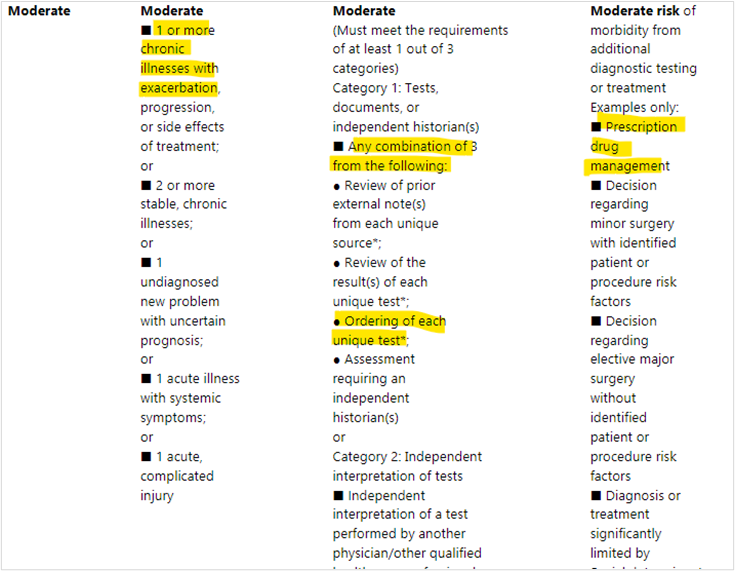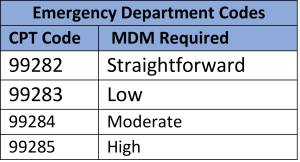
In January of 2021, the American Medical Association (AMA) released new evaluation and management (E/M) guidelines that simplified the documentation requirements for outpatient E/M services. On the heels of that success, the AMA announced in June that the CPT® Editorial Panel has approved the revision of the rest of the E/M codes. These code changes will go into effect 1/1/2023.These guideline changes will affect the following E/M codes:
- Hospital Inpatient Services – 99221-99223, 99231-99239
- Observation Services – 99217-99220
- Emergency Department Services – 99281-99285
- Consultation Services – 99245, 99252-99255
- Nursing Facility Services – 99304-99310, 99315, 99316
- Home and Residential Services – 99341, 99342, 99344, 99345, 99347-99350
Before you get dismayed, this is good news. Currently, there are three sets of guidelines, the 1995, the 1997 and the new 2021 guidelines. Effective 1/1/2023 there will only be one set of evaluation and management guidelines.
The 2023 guidelines are basically an expansion of the 2021 guidelines. The level of service will be based on either medical decision making (MDM) or time. There is one exception to this, emergency department codes (99281-99285) will be leveled by MDM only since it would be difficult to use time to level an ED service.
If you are comfortable with the MDM table for the 2021 guidelines, you will be happy to know the new MDM table will be almost identical, except with a few additions making it more appropriate for inpatient E/M services.
For example, in the “number & complexity of problems addressed” column, they added a few new bullets in the category of Low MDM – adding one stable acute illness and one acute uncomplicated illness or injury requiring hospital inpatient or observation level care. Stable acute illness is defined as “a problem that is new or recent for which treatment has been initiated. The patient is improved and, while resolution may not be complete, is stable with respect to this condition.” Acute, uncomplicated illness or injury requiring hospital inpatient or observation level care is defined as “a recent or new short-term problem with low risk of morbidity for which treatment is required. There is little to no risk of mortality with treatment, and full recovery without functional impairment is expected. The treatment required is delivered in a hospital inpatient or observation level setting.” In the “risk of complications and/or morbidity or mortality of patient management” column, they added parenteral controlled substances under the High MDM category.

Below is an example of how leveling an E/M in the hospital setting might look. Dr. Smith admits the patient to observation for acute on chronic CHF. The doctor orders an EKG, chest X-ray, and BMP and makes changes to the patient’s home medications. This would be a moderate level service due to a chronic illness with exacerbation, order of three unique tests and prescription drug management.

One of the most positive changes was the deletion of the observation E/M codes. CPT codes 99221-99223 and 99231-99239 will be used to report E/M services for both inpatient and observation status visits. Based on the chart below, we can see that our moderate level observation example will be coded as 99222 in 2023. Moreover, if the moderate level MDM patient is admitted to inpatient status the code will also be 99222.

To streamline the Emergency Department E/M codes, code 99281 will be revised to an E/M code that doesn’t require the presence of a physician or other qualified health care provider. This will line the other four E/M codes up perfectly, so we no longer have two moderate level emergency department visit codes. Keep in mind that the ED codes cannot be levelled based on time, only based on MDM.

The consultation codes are also being revamped. Just as they did with the 2021 changes, they will be removing the first level codes (99241 and 99251) so that they can line up the four MDM levels (straightforward, low, moderate and high).

There is so much more to discuss regarding these changes. Look for future articles, where we will discuss using time to level a service and much more. For more information, contact Angela Wood at AWood@AskPHC.com or 704-978-9052.